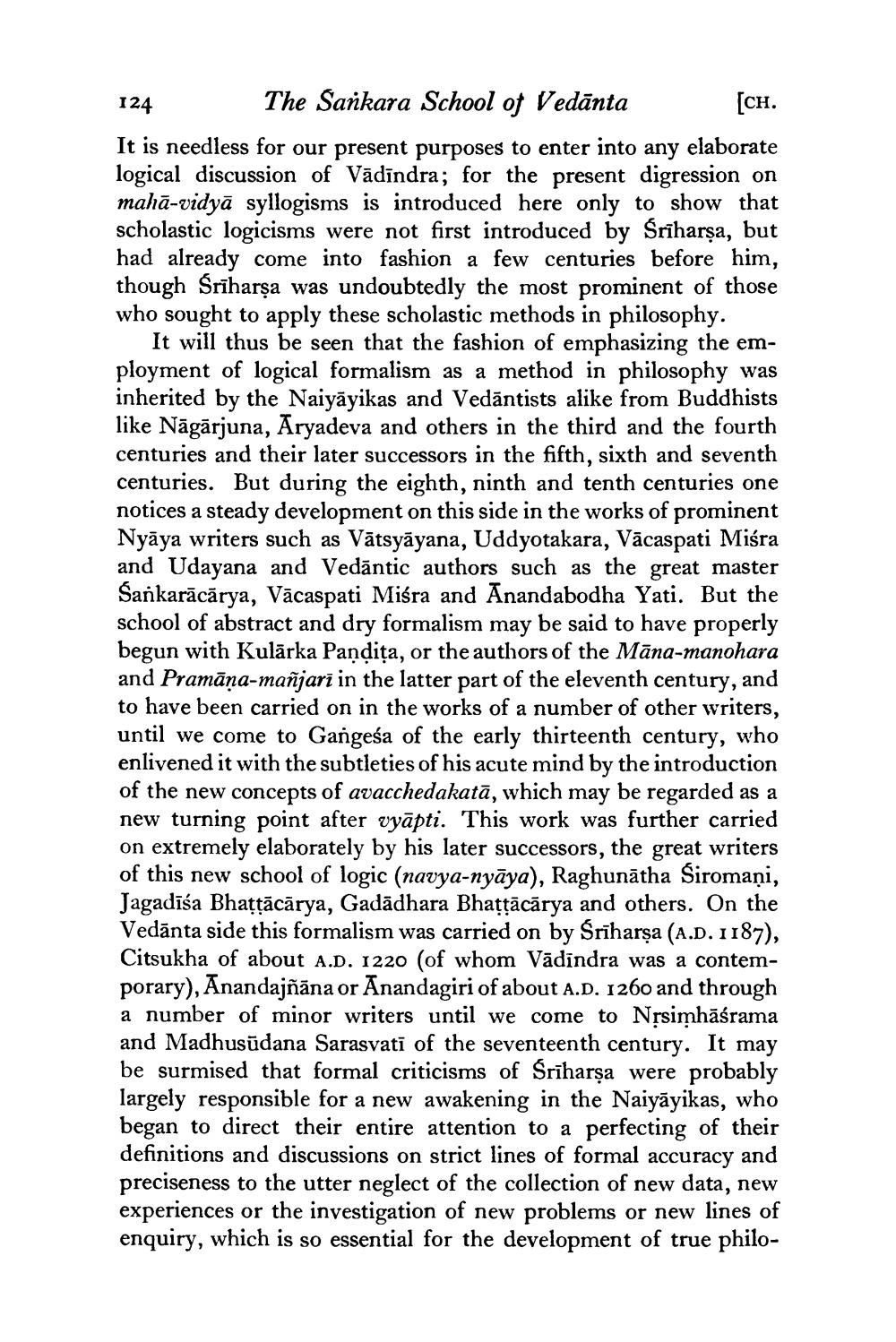________________
124
The Sankara School of Vedānta [CH. It is needless for our present purposes to enter into any elaborate logical discussion of Vādīndra; for the present digression on mahā-vidyā syllogisms is introduced here only to show that scholastic logicisms were not first introduced by Śrīharşa, but had already come into fashion a few centuries before him, though Śrīharşa was undoubtedly the most prominent of those who sought to apply these scholastic methods in philosophy.
It will thus be seen that the fashion of emphasizing the employment of logical formalism as a method in philosophy was inherited by the Naiyāyikas and Vedāntists alike from Buddhists like Nāgārjuna, Aryadeva and others in the third and the fourth centuries and their later successors in the fifth, sixth and seventh centuries. But during the eighth, ninth and tenth centuries one notices a steady development on this side in the works of prominent Nyāya writers such as Vātsyāyana, Uddyotakara, Vācaspati Miśra and Udayana and Vedāntic authors such as the great master Sankarācārya, Vācaspati Miśra and Anandabodha Yati. But the school of abstract and dry formalism may be said to have properly begun with Kulārka Pandița, or the authors of the Māna-manohara and Pramāņa-mañjarī in the latter part of the eleventh century, and to have been carried on in the works of a number of other writers, until we come to Gangesa of the early thirteenth century, who enlivened it with the subtleties of his acute mind by the introduction of the new concepts of avacchedakatā, which may be regarded as a new turning point after vyāpti. This work was further carried on extremely elaborately by his later successors, the great writers of this new school of logic (navya-nyāya), Raghunātha Siromaņi, Jagadīša Bhattācārya, Gadādhara Bhattācārya and others. On the Vedānta side this formalism was carried on by Srīharşa (A.D. 1187), Citsukha of about A.D. 1220 (of whom Vādīndra was a contemporary), Anandajñāna or Anandagiri of about A.D. 1260 and through a number of minor writers until we come to Nșsimhāśrama and Madhusūdana Sarasvati of the seventeenth century. It may be surmised that formal criticisms of Sriharșa were probably largely responsible for a new awakening in the Naiyāyikas, who began to direct their entire attention to a perfecting of their definitions and discussions on strict lines of formal accuracy and preciseness to the utter neglect of the collection of new data, new experiences or the investigation of new problems or new lines of enquiry, which is so essential for the development of true philo




